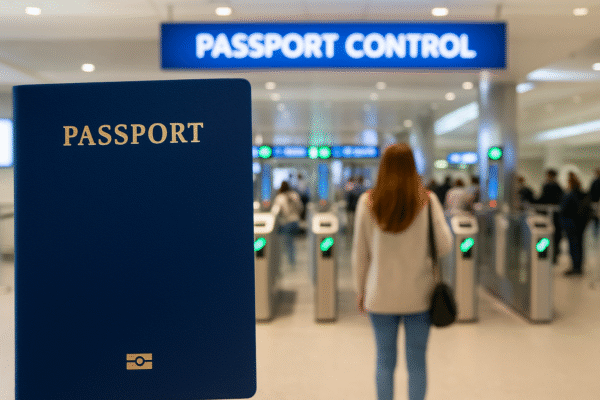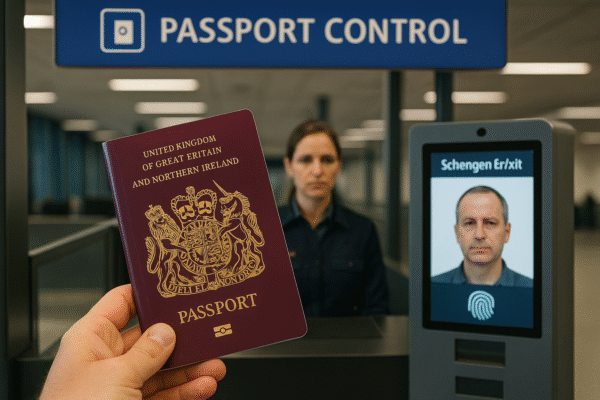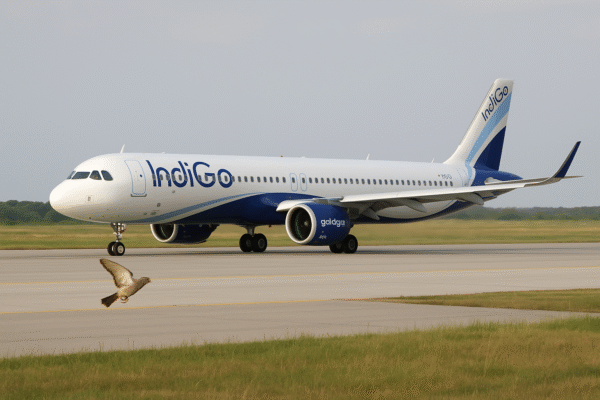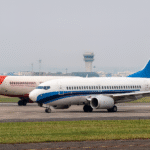In a dramatic incident that could have turned dangerous, IndiGo Flight 6E-123 was forced to execute an emergency return to Nagpur Airport following a bird strike shortly after takeoff. The flight, carrying 272 passengers, became airborne from Nagpur at about 10:30 AM. Within moments of ascent, the crew detected a bird impact and quickly initiated the standard protocol to abort the climb and return to the airfield.
Thanks to swift decisions and well-practiced procedures, the aircraft touched down again within mere minutes. Passengers were deplaned safely, and reassuringly, there were no injuries or medical emergencies reported. The airline crew handled the developing situation with calm professionalism, putting safety at the forefront.
Ensuring Safety: Immediate Inspection and Outcome
Once on the ground, ground staff and airport authorities promptly conducted a thorough inspection of the aircraft. Early findings showed that the plane remained fully operational, with no major system damage or visible impairments. With operations involving birds posing well-known challenges during takeoff and landing, the quick assessment helped reassure everyone involved that the situation remained under control.
Bird Strikes: Hidden Hazards in Aviation
Bird strikes are among the more frequent natural hazards in aviation—particularly perilous during the critical phases of takeoff and landing, when aircraft are closer to ground level. Collisions with wildlife can damage engines, windshields, and other vital systems, potentially leading to serious emergencies.
In India, bird strike mitigation has been a growing focus for regulators and airports alike. Effective bird hazard management includes proactive surveillance, radar systems, and trained wildlife control teams maintaining vigilance near runways. Though such measures significantly reduce incidents, bird strikes unfortunately continue, underscoring the need for constant refinement of prevention strategies.
IndiGo’s Safety Protocols: Training Meets Execution
As one of India’s leading low-cost carriers, IndiGo places a high priority on safety and regulatory compliance. The airline released a statement highlighting that their crew adhered strictly to the standard operating procedures. The team’s swift reaction—assessing the situation, communicating with air traffic control, and executing a safe return—exemplifies the company’s safety culture.
Pilots follow well-defined decision trees when faced with bird strikes: evaluate damage, assess whether to continue or abort the flight, and initiate the safest response accordingly. In this case, returning to Nagpur was both the prudent and pre-planned course of action.
Regulatory Oversight: The DGCA’s Role
India’s Directorate General of Civil Aviation (DGCA) has launched an official inquiry into the incident. The regulator’s mandate is to investigate any serious aviation event, including bird strikes, to maintain oversight and ensure safety. Their investigation will focus on multiple elements: the precise circumstances of the bird strike, any structural or system impacts on the aircraft, the crew’s response, and environmental conditions—specifically, local bird activity at Nagpur at the time.
The DGCA will also review existing bird hazard management systems and whether they were properly employed, aiming to identify areas for improvement that enhance aviation safety.
Aviation Best Practices: From Detection to Mitigation
Globally, airports deploy an array of anti-bird-strike tactics:
- Bird-scaring devices such as pyrotechnics or distress calls
- Trained wildlife management personnel monitoring activity
- Radar and acoustic tracking of bird movements
- Managed habitat control around runways
At Nagpur and other Indian airports, these measures are part of comprehensive wildlife hazard strategies. Still, the occasional strike reinforces that even the best systems face limits, especially in areas with high bird density or environmental changes.
Looking Ahead: Vigilance and Preparedness
Following this incident, both the DGCA and IndiGo reaffirmed their commitment to passenger safety. IndiGo assured that it will fully cooperate with the investigation, providing necessary documentation, operational records, and evidence of procedural compliance.
The broader aviation community is expected to draw lessons from this event—reviewing response plans, enhancing bird control measures, and possibly adopting improved detection technologies or expanded advisory systems to reduce such events in the future.
Final Thoughts
IndiGo Flight 6E-123’s unexpected turn—beginning with a bird strike but resolved with safe emergency landing—serves as a powerful reminder of two things: the unpredictable nature of aviation hazards, and the unyielding value of training and preparedness. With 272 passengers delivered to the ground safely thanks to teamwork, protocols, and systems in place, the incident underscores how well-coordinated responses safeguard lives.
While bird strikes remain a persistent risk, incidents like this one illustrate that the aviation ecosystem—airlines, airports, regulators—can work in harmony to manage crises effectively. As the investigation concludes, operational insights are likely to inform more refined safety measures, both in Nagpur and across India’s aviation sector.
For more travel news like this, keep reading Global Travel Wire

















